Human trafficking is a crime that has changed its operational dynamics in recent years; it has become more complex and it has intensified its connection with criminal economies. We discussed this issue with Abby Ardiles, a journalist from El Comercio, and Óscar Chumpitaz, a journalist from La República, both specializing in covering organized crime and various forms of exploitation in the country.
Based on your journalistic work, what is your perception of the evolution of human trafficking in Peru?
Óscar Chumpitaz: In Peru, the crime of human trafficking has grown due to many factors, but in recent years, it has been exacerbated by the pandemic and the economic crisis in countries like Venezuela. [The crisis] wreaks havoc and causes forced and massive migrations. Also, the development of digital communications has been exploited by criminal networks to multiply their recruitment mechanisms.
Until about five years ago, we could say that human trafficking with the means of sexual exploitation in Peru was located only in La Pampa, in Madre de Dios, or other settlements like La Rinconada, in Puno. Today, we see a diversity of places or territories imposed by different mafias. [They are present] in various districts of Lima or in other cities such as Arequipa, La Libertad, Piura, Tumbes, Lambayeque, or Ica.
Abby Ardiles: Indeed. This crime has evolved with practices imported from abroad. [Currently], you go to Lince, and you can see groups of girls being exploited. Girls who are being coerced by international mafias to make money and profit through the use of their bodies. We see the arrests made by the National Police with the Alayón Dynasty, Sons of God, or Los Gallegos, all factions of the Aragua Train, which are operating with greater hegemony in the country. But we also see exploitation with a high level of violence.
Have factors like mass migration and criminality complicated or modified the dynamics of human trafficking?
Óscar: Human trafficking is an international crime and is closely related to the migratory flows in the region. Since 2021, we have seen how Venezuelan, Colombian, and Ecuadorian criminal networks have been competing for sexual exploitation sites in Lima, and this dynamic has been consolidating. In February 2022, two Ecuadorian women were murdered in Cercado de Lima for refusing to pay fees. Since then, a war has been declared because these girls had been brought by Los Tiguerones from Ecuador, and they have declare war on Los Gallegos.
Abby: As journalists, we remember the case of two Ecuadorian women who were murdered on the orders of Armando, the leader of Los Gallegos, or Mamut, who was the third leader of the Aragua Train and managed the business in the districts of Lima Norte. These groups were linked to extortion, human trafficking, and hired killing. With migration, unfortunately, these bad elements also arrived, causing the crime to evolve to gruesome and bloody levels. In May 2023, for example, they threw the bodies of two victims of human trafficking in the Pasamayito area, triggering another war. We saw grenades, shootings, cases of hired killing, even though Mamut and Mamera – the later another leader of Los Gallegos – were not on the streets.
Óscar: Places like Lince, Risso, or Cercado de Lima were previously controlled by Peruvian mafias. Once these Venezuelan networks start to emigrate, they also began to take over these places and displace the Peruvians. Additionally, over the years, criminal networks from Ecuador, like Los Tiguerones, also entered into the scene, clashing with these Venezuelan factions.
Abby: Remember that the Lince area was managed by Cholo Isaac, who was killed by Los Gallegos. It was assumed that he was negotiating with human trafficking victims from Venezuela to bring them to Lince and mining areas, but they cornered him in a fast-food restaurant and killed him. That marks the beginning of everything we have seen since the pandemic era in crimes related to human trafficking, extortion, and hired killing. They began with dismemberments and leaving marks showcasing how they commit their crimes, signaling their intent to forcefully seize territorial hegemony in sexual exploitation.
Well, Los Gallegos have already been dismantled, but now the remaining faction is «Los hijos de Dios,» who are as bloodthirsty as the first and even a bit more, from what I have read in the testimonies of their victims.
What other groups, besides migrants, have you identified as victims of this crime? And how are the victims being recruited? Have you identified any patterns?
Óscar: During the recruitment process, jobs aren’t only offered to women. Men are also taken to Gamarra for various types of work. Some are subjected to forced labor, while others end up being victims of extortion, such as workers providing services in mototaxis, for example, predominantly Venezuelans who are also extorted. I think that’s another pattern of this mafia. They also take [victims] to illegal mines. In Pataz, for example, we have seen the presence of foreigners. In La Pampa, there are also many foreigners doing illegal work outside the scope of the law.
Abby: According to the prosecutor’s office, last year, an emblematic case was the Dragon of Taiwan, where a group of men and women from Asia were held captive in a house in La Molina and were victims of human trafficking for the means of labor exploitation. If we could look for a pattern in foreign victims, it would be that they come from countries in crisis and are vulnerable, being lured with false job offers, with the false promise of a better future, housing, food, and clothing. These people, seeing the situation they are in, trust because they are sometimes recruited by family members, close friends, or neighbors. There is a certain level of trust that leads them to agree and end up falling into human trafficking networks.
The Ministry of the Interior has claimed to make progress in the fight against human trafficking, either through operations, arrests, or rescuing victims. Do you think this reflects the reality of what is happening on the streets?
Óscar: While in recent years progress has been made in Peru with the creation of laws for combatting and assisting [victims], effective medium and long-term assistance programs remain pending. I believe that merely removing them from an exploitative situation is not enough, especially if they do not have legal, psychological assistance, or a safe refuge. Many of them have been crucial witnesses in unraveling some of these criminal organizations, and their lives have been laid bare. We have access to several testimonies, and they cry out for protection and help.
Abby: We know that some victims of human trafficking have been repatriated, but it is concerning to know what kind of protection they are receiving in their home country because when the Aragua Train captured and brought them to Peru, they were extorted. They were told they would kill their family because they already know where they live, whether they have children or siblings. So, if they return to their home country, will they continue to be extorted and coerced? The same goes for victims who stay in the national territory. What kind of shelters do we have? What kind of processes are we providing to the victims? What kind of psychological support are we providing?
In that context, what do you consider to be the main challenges the State faces in combating this crime and other forms of exploitation?
Óscar: Firstly, guaranteeing public policies in the short, medium, and long term that allow survivors of human trafficking to rebuild their life plans and prevent their revictimization. Secondly, ensuring that police and judicial investigations follow the money trail they are capturing and not just settling for condemning the smaller links in the chain of exploitation. And thirdly, I believe that effective cooperation networks should be expanded. Commitment and coordination should occur at the district, provincial, and even regional levels to combat this crime.
Abby: I think one of the main challenges the State faces is the sexual exploitation of children and adolescents linked to human trafficking. We have recently seen various statements demanding that hotels request identification documents from underage individuals entering. It’s not merely a task for the State or the government to demand or continue running campaigns; it’s also the responsibility of society. Sometimes we witness a crime and prefer to remain silent and subsequently become accomplices. I believe human trafficking can be addressed through prevention, engaging in social communication, and also by implementing the plan we already have against human trafficking, which has been in place for quite a few years. Recently, a recount has been made of how much has already been executed, and we see that few institutions are committed to eradicating the crime.
What do you consider to be the responsibility of journalism and the media in the fight against human trafficking?
Óscar: Accurate and responsible information is a key tool for the prevention of this crime and for making it visible. Human trafficking is often hidden in the media and, when it appears, it is in the police section. Unfortunately, many media outlets [report it] without a human rights perspective, without a gender perspective. With this initial diagnosis, we [journalists] have decided to take on the commitment to propose tools to strengthen and favor the visibility of this issue in the media agenda and also contribute to the prevention of the crime.
Abby: Our responsibility is immense. Presenting a human trafficking report as «police news» is simply stating the fact. But we know that this crime deserves a deep analysis because there are major criminal organizations behind it. Saying that two sex workers were murdered is to overlook the entire problem. They were not sex workers; they were victims of sexual exploitation. They were victims of an international criminal organization and caught in a war for territorial hegemony over a sexual exploitation arena.
| Abby Ardiles is a journalism graduate from Jaime Bausate y Meza University. She has been writing for El Comercio since 2022. Currently, she specializes in covering police-related issues and human trafficking. Óscar Chumpitaz is a journalism graduate from the Jaime Bausate y Meza School of Journalism. He currently works in the Society section of La República newspaper and specializes in topics related to criminality and human trafficking. |





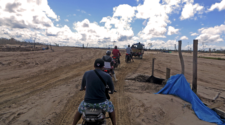
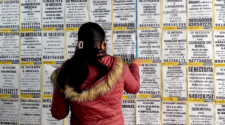
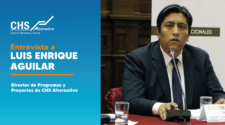
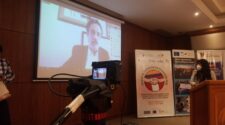

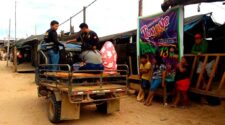
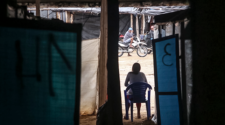



No hay comentarios aún